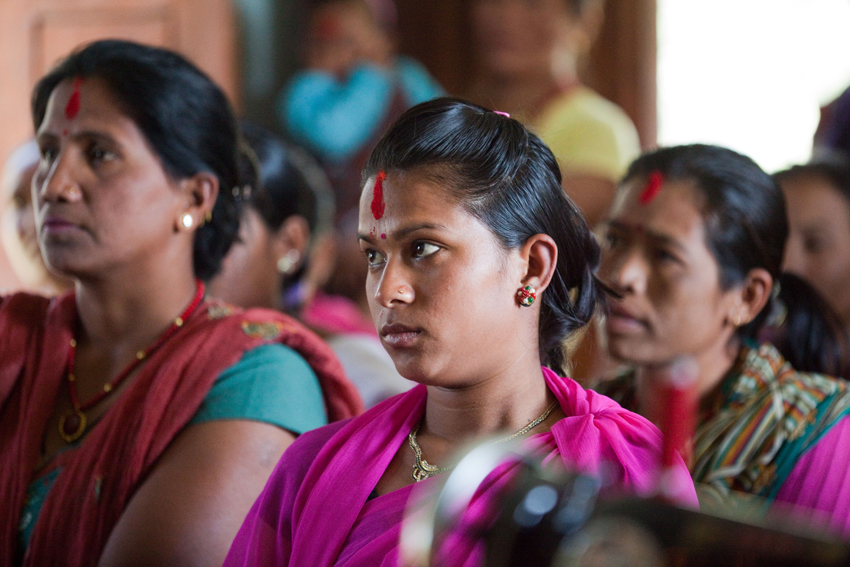Equal participation of men and women in public sector governance has been a consistent political and administrative preoccupation around the world for some time, yet many countries have struggled to reach their gender-related goals. However, the past 20 years have witnessed an impressive rise in the participation of women in politics and administration in developed and developing countries alike. There were only 13.2 per cent of women parliamentarians in Asia in 1995, growing to 18.5 per cent in 2015. The Pacific region had just 6.3 per cent women MPs which almost tripled to 15.7 per cent in 2015. The global average of women in national parliaments has increased to 22.1 per cent, compared to just 11.3 per cent in 1995. Advocating for a 50/50 gender equality target is therefore, a timely and feasible policy demand for all countries.
We have just observed International Women’s Day 2017, chanting #BeBoldForChange. And Nepal, one of the poorest South Asian countries, has something interesting to show to the world. It exhibits dramatic progress in terms of involving women in its public-sector governance. For the first time in its history, Nepal has its first women president, chief justice and speaker in the national parliament. The proportion of women members in the parliament is 29.5 percent (up from 5.9% in 2006); 36% in civil service (11% in 2008); and secondary school teachers consist of 22% (from 14.8% in 2008). So what has caused this dramatic increase in the participation of women in public-sector governance in Nepal?
For the first time in its history, Nepal has its first women president, chief justice and speaker in the national parliament.
Following the downfall of a centuries-old monarchy in 2006, successive governments in Nepal have introduced policy measures to make Nepali society more equal and just, particularly in terms of gender and ethnicity. These include policies of reservation, quota and adoption of the principles of positive discrimination. Reservation policies oblige all public-sector agencies (including political parties) to reserve a total of 33 per cent of vacant seats for women. For example, the Public Service Commission (PSC) allocates a total of 45 per cent of vacant positions to different clusters of the society, and reserves these allocated seats to women (33%), ethnic minorities (27%), Madhesi minorities (22%), Dalits (9%), people living with disabilities (5%), and people from the remote highlands (4%). Other public-agencies such as Nepal Police, Nepal Armed Forces, Teachers Service Commission, and Nepal Army also follow the same principle of reservation. Recent evaluations suggest that this policy has not only increased the number of women participants in the public-sector, but also has helped enhance the confidence of women to compete with their male counterparts.
Quotas have also been instrumental in securing senior-level public sector portfolios for women. At the national level, several constitutional bodies such as the National Human Rights Commission, National Information Commission, National Women Commission and several other entities have at least one woman member or commissioner. More importantly, there is a huge shift in relation to women’s participation at the local government level. As per the recently promulgated Local Elections Act, the forthcoming local elections are envisaged to have more elected women leaders than ever before. The law has arranged quotas for women either to be the Mayor or Deputy-Mayor in municipalities, and Chairperson or Vice Chairpersons in villages. This policy is likely to produce about 15,000 (almost 50% of total elected local leaders) women leaders in key political positions at the local level.
The principles of positive discrimination have been endorsed in Nepal’s public-sector governance for around two decades. It aims to give preferences to women whilst formulating public policies, budgets, and other developmental projects. One example is the National Training Policy of the civil service of Nepal, which requires officials to prioritise female staff when there are domestic and international training opportunities. The Ministry of Finance has established a committee on a gender-responsive budget chaired by a senior officer at the ministry. As a result, a total of 24,230 million Nepali Rupee has been earmarked as a budget that directly benefits women for the ongoing fiscal year.
Numbers are useful in illustrating stories, but sometimes they don’t capture the whole picture. Although women’s participation in Nepal’s public sector has increased dramatically in the last decade, the effort to make an equal and just society in gender terms still has a long way to go. Many of the women working in public administration belong to high-caste elite families – hence, the participation of deprived women in governance has been a challenge. Women in rural areas lack adequate educational opportunities – although there has been progress on the literacy rate among adult females (from 17.38% in 1991 to 54.75% in 2015). However, of the total literate women, the majority of them belong to urban elite families – questioning the educational gap in rural and urban inhabitations.
Although women’s participation in Nepal’s public sector has increased dramatically in the last decade, the effort to make an equal and just society in gender terms still has a long way to go.
Irrespective of the positive outcomes of inclusive policies in Nepal, the stories of women participants in politics are rather bitter. During the election for second Constituent Assembly in 2013, several political parties nominated their leaders’ wives, daughters and relatives as representatives – abusing the provisions of the proportional electoral system. The women who were struggling to newly establish themselves in politics were not only neglected but also humiliated by their nepotic party leaders. Even if women were included in the political positions of the government, there is speculation that women have not been given influential positions.
The 5050 by 2030 agenda is relevant to Nepal, especially in enhancing the quality of women’s participation in the public sector. Given that (i) the literacy rate among girls is increasing, (ii) quota and reservation policies are revisited every 10 years, and (iii) the scope of political awareness among young people is expanding, the future of women’s participation in Nepal is looking bright. By 2030, Nepal will certainly achieve the broader agenda of 50/50 at least in quantitative terms – but equality across Nepali society will require more than numerical parity.




